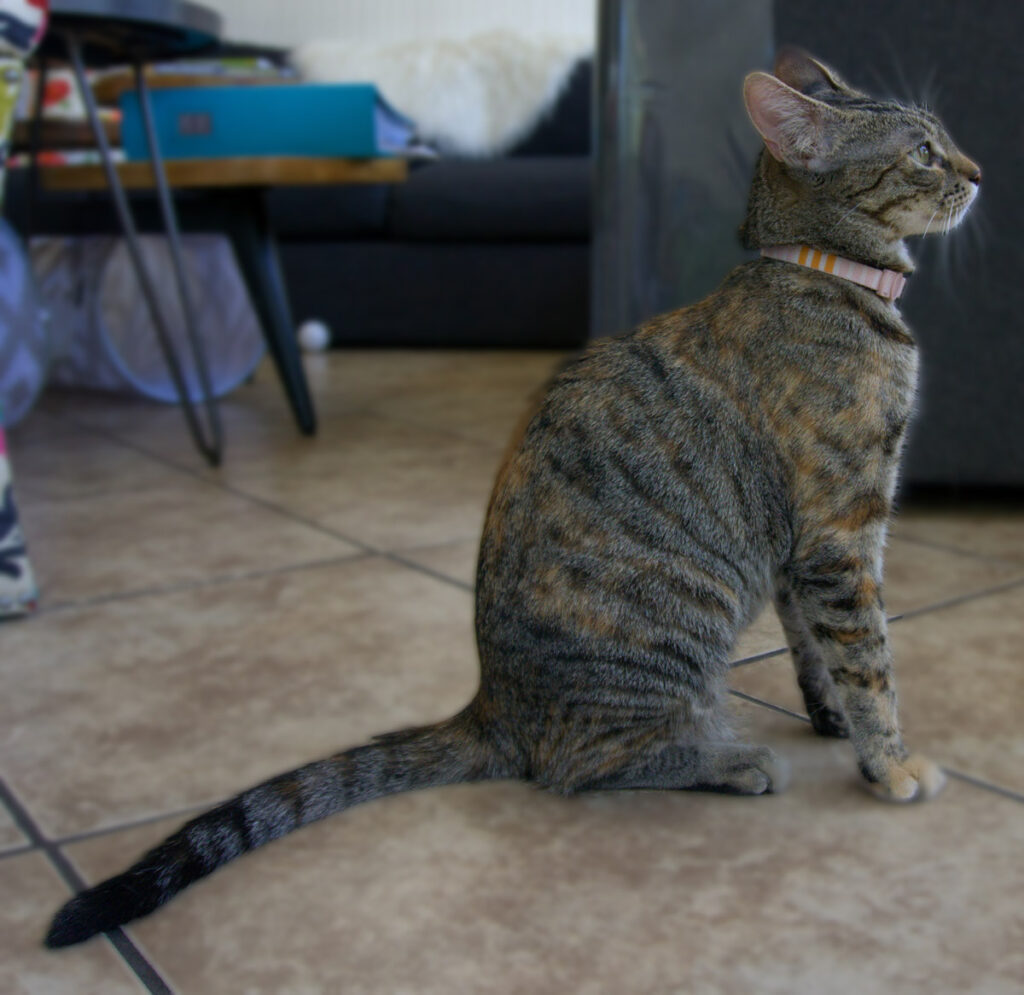You may have heard of torties, short for tortoiseshell cats, but have you heard of torbie cats?
What are torbie cats?
Torbie cats are a mix of two different cat fur patterns: tortoiseshell and tabby. Torbie is a concatenation of the two words.
What are tortoiseshell cats?
Tortoiseshell cats get their name after the similarity of their coat pattern to a shell of a tortoise. Tortoiseshell cats are a combination of two colors other than white. Color combinations can be shades of orange, red, yellow, or cream with shades of dark brown or black fur.
As with calico cats, tortoiseshell cats are almost exclusively female as the genes needed to produce this fur pattern lie on the X chromosome.
Male cats that are tortoiseshell are usually born sterile. Male tortoiseshell cats are a result of chromosome aberrations and have an extra X chromosome (XXY) that allows for the expression of the fur pattern.
What are tabby cats?
Tabby cats are one of the most common fur patterns found on mixed breed domestic cats. All tabbies have a dark “M” marking on their forehead, “eyeliner” around the eyes, thin pencil strokes on the face, and banding around the legs and tail.

The Agouti gene is responsible for whether a cat has a tabby pattern or not. The dominant allele (A) causes the cat to be a tabby, while the recessive allele (a) causes the cat to have a solid color.
Torbie cats: a mix between tortoiseshell and tabby
Torbies combine aspects of both the tortoiseshell and tabby cat fur patterns due to the inherited genes of the cats. Almost all torbie cats are female because of the tortoiseshell pattern.
Torbies are also sometimes known as “reverse calicos” or “patched tabbies”. As the name implies, corbies carry both the markings of a tabby cat as well as patches of another color that form the tortoiseshell pattern.

The end effect is a striped or marbled cat with patches of a secondary color which is typically orange (or cream if the cat is a dilute torbie).
Are there male torbie cats?
Torbies, as with all tortoiseshell cats, are almost entirely female.
Tortie and torbie cats that are male are incredibly rare and are considered “unicorn cats“. Some estimates range from the chance of a torbie being male from 1 in 3,000 to 1 in 10,000.
Torbie cats are popular
One study, published in the Journal of Applied Animal Welfare Science in 2014, looked at the average length of stay at a no-kill animal shelter for 5,659 between 2008 and 2012. The average length of stay at the shelter for all cats was a little over two months at 61.2 days.
The study found that torbies had the shortest average length of stay at 48.3 days. This was a lower average length of stay than the straightforward calicos, tortoiseshells, and tabbies which each averaged a similar length of stay well over 60 days.

What are dilute torbies?
Dilute torbies is the the lighter or “washed out” version of a torbie.
In cats, the gene responsible for the dilution of coat color is referred to as the “Dilute” gene, symbolized as “D”. This gene has two alleles: D (Dense) and d (Dilute). The Dense allele (D) is dominant and the Dilute allele (d) is recessive.
When a cat inherits the Dilute (d) allele from both parents, the intensity of the coat color is reduced. This results in black color changing to blue (a smoky gray), and red changing to cream.

A torbie cat with d/d genes will have the combination of tortoiseshell and tabby coat patterns but those colors will be creams and blues instead of more vibrant fur coat colors.
Torbies are not as common as other cat fur patterns
With their combination tabby and tortoiseshell fur patterns, torbies are less common compared to their straightforward tabby and tortoiseshell counterparts. Since the dilute gene is recessive, a dilute torbie cat is even more rare than the vibrantly colored torbie cats.
References
Brown, W. P., & Morgan, K. T. (2015). Age, breed designation, coat color, and coat pattern influenced the length of stay of cats at a no-kill shelter. Journal of Applied Animal Welfare Science, 18(2), 169-180. https://doi.org/10.1080/10888705.2014.971156
Pedersen, A. S., Berg, L. C., Almstrup, K., & Thomsen, P. D. (2014). A tortoiseshell male cat: chromosome analysis and histologic examination of the testis. Cytogenetic and genome research, 142(2), 107-111. DOI: 10.1159/000356466
This post was originally written on June 26, 2022 and has since been updated.






